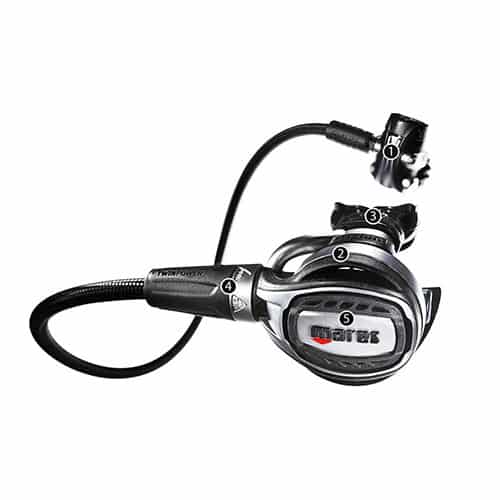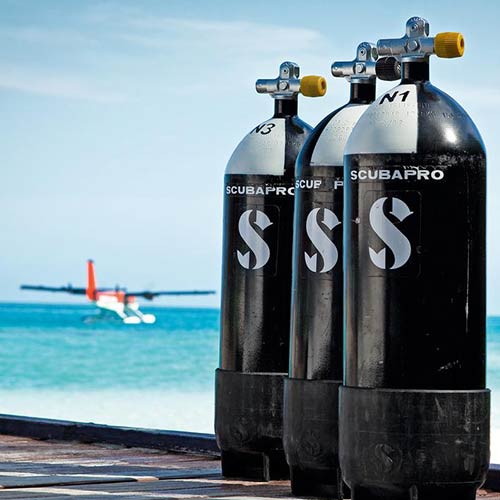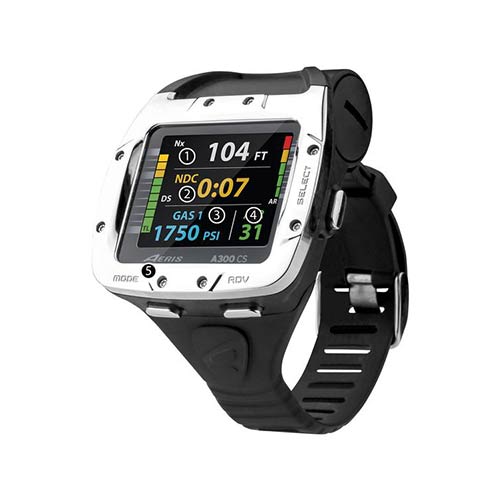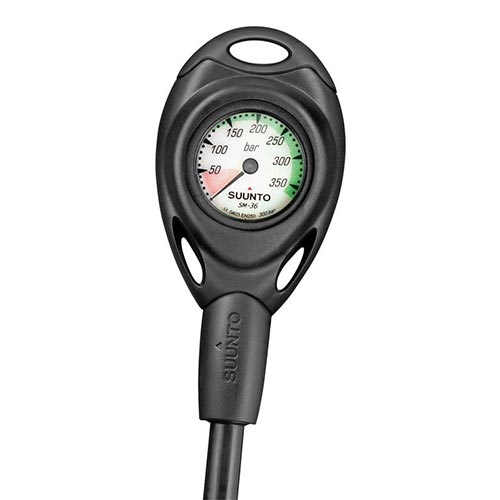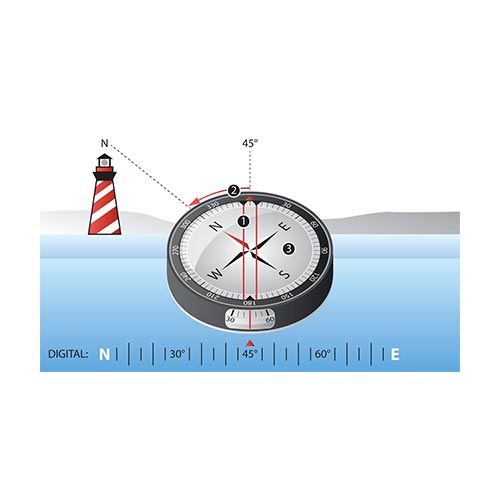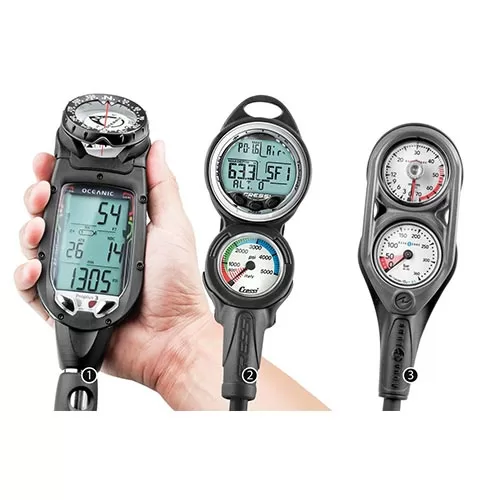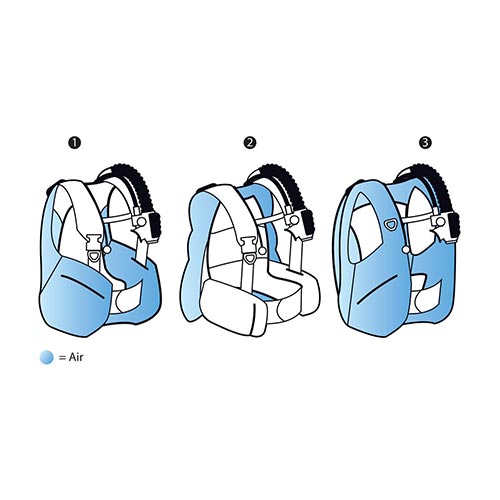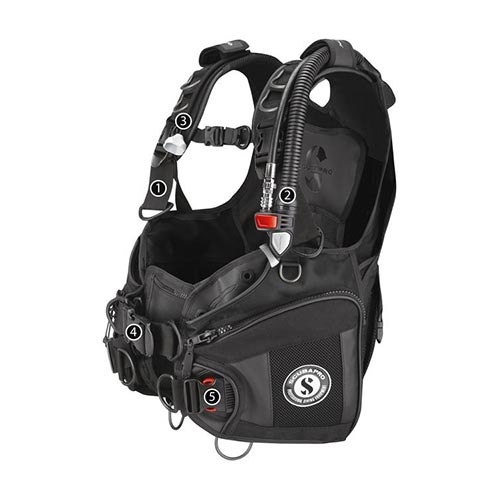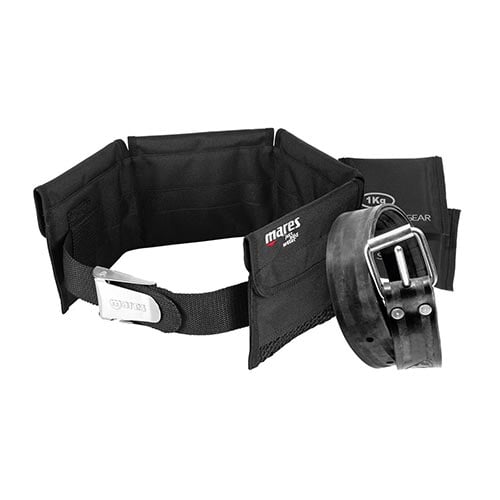The Scuba Gears
Regulator,Bcd,Instrument Console
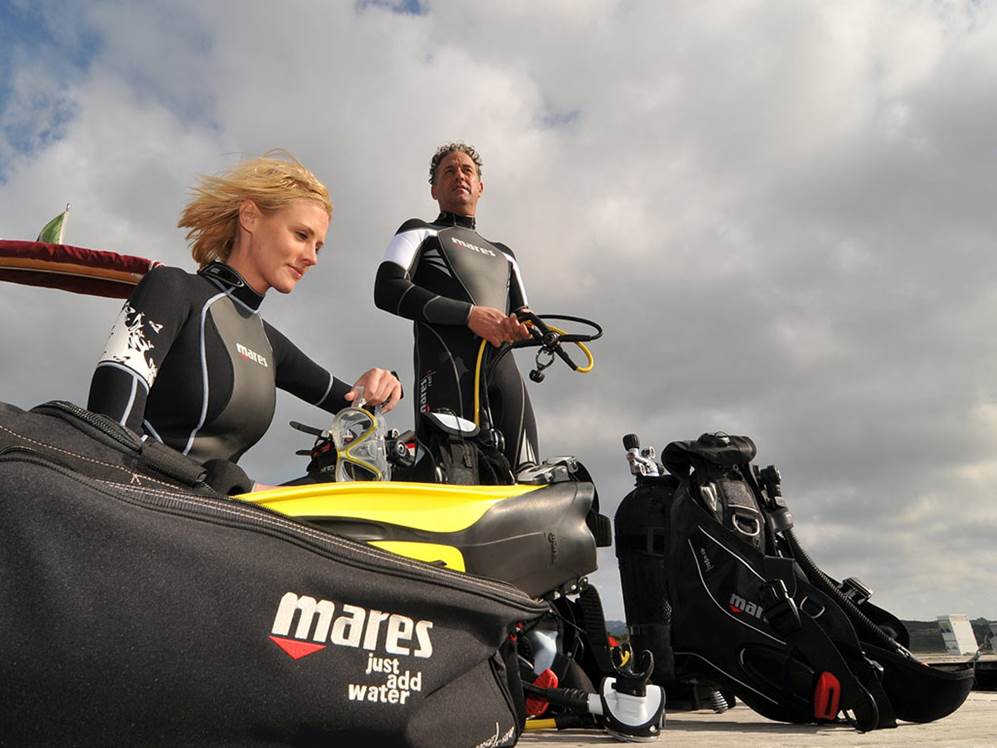
播放影音
The Scuba Gears
Underwater life support gear
As you know, scuba is actually an acronym that stands for self-contained underwater breathing apparatus. The term scuba now refers to the transmission system portion of the snorkeling system. The transfer system consists of a regulator, a backup air source and a high pressure scuba cylinder.
Regulator
The regulatorhas a first stage and a second stage. The first stage can be unbalanced, balanced, double balanced, or overbalanced. The best regulators have a balanced first stage. The first stage will reduce the high pressure in the cylinder to approximately 10 bar based on the ambient pressure. The second stage then reduces the 10bar gas coming out of the first stage to the ambient pressure you require.
In addition to the main second stage, the transmission equipment also has a spare second stage with a long bright tube that can be used for sharing in an emergency Gas source. The mounting clip holds the spare second stage in place on the buoyancy compensation device. There is another type of backup air source, which is to connect the inflation pipeline of the buoyancy compensation device and the backup second stage together, eliminating a pipeline for the transmission equipment.
In addition to the main second stage, the transmission equipment also has a spare second stage with a long bright tube that can be used for sharing in an emergency Gas source. The mounting clip holds the spare second stage in place on the buoyancy compensation device. There is another type of backup air source, which is to connect the inflation pipeline of the buoyancy compensation device and the backup second stage together, eliminating a pipeline for the transmission equipment.
In cold water, the standby air supply should consist of completely separate regulators (primary and secondary heads) that can be connected to a second set of outlet valves on the primary cylinder, or a separate standby cylinder can be used.
There are two different ways to attach transmission equipment to a gas cylinder: yoke or DIN (German Institute of Standardization). the DIN first stage head is threaded and screwed into the cylinder valve, while the yoke first stage head rests against the valve and the yoke screw forces the two together. the SSI Diving Professionals will demonstrate how to assemble and disassemble the transmission equipment.
Diving Cylinder
Another piece of transportation equipment is the air cylinder. Scuba cylinders are designed to maintain an air supply. Depending on the size and construction of the cylinder, the breathing gas is compressed by a factor of about 150 so that it can be contained in a relatively small space.
The Information System
One of your total dive systems is the Information System, an information system that is used to assist you in making and following your dive plan. It contains a dive computer watch, an analog gauge set and your SSI dive log.
Scuba Computer
One of your total dive systems is the Information System, an information system that is used to assist you in making and following your dive plan. It contains a dive computer watch, an analog gauge set and your SSI dive log.
We live in a computerized, automated world and recreational diving is no exception. A dive computerized watch runs automatically underwater and immediately starts recording information - depth, time and temperature. In some advanced models, it even estimates your underwater time based on your cylinder's residual pressure and air consumption. Once back on the surface, the dive computer continuously tracks your surface time, allowing you to control your surface time until your next dive.
Ask your SSI dive professional for more information about dive computers watches. He will help you decide the best dive computer watch for you based on the type of diving you want to do and the features you need.
Mechanical Instrumentation
Another important part of the information system is the mechanical, or non-computerized, instrumentation set.
潛水壓力錶(SPG)
A dive pressure gauge is a diver's "fuel gauge". It tells the diver how much gas is left in the scuba tank. The gauge is connected to the high pressure outlet of the regulator's first stage head. It should have large, easy-to-read markings and a scratch-resistant lens. Pressure gauges are available in imperial or metric units, as well as digital or analog, and you should make a habit of checking them frequently during your dives.
Depth Gauge
Knowing what depth you are at is very important to following your planned dive. You need to know when you have reached your planned depth and you need to monitor your current depth to ensure that you do not exceed your planned depth limit. Most gauge depth gauges are calibrated in metric units of sea water (msw), and some have a maximum depth indicator that records the deepest point reached during the dive. Some sets of depth gauges are corrected for high altitude. Electronic depth gauges are generally more accurate than analog depth gauges and are standard on all dive computer watches.
Timer
A dive computer watch is the most common type of timepiece, and a dive watch is also a type of timepiece. A dive watch, of course, displays the time and also helps the diver to keep track of the time spent on the dive. The unidirectional dial on the outer ring of the dial should be set at the beginning of the dive to calculate the actual dive time. Some digital dive watches can continuously display both current time and dive elapsed time.
Compass
The compass helps you maintain a sense of direction when there are no obvious underwater features or when you can't navigate naturally in low visibility. It can also guide you back to your original entry point.
- Side readers. This type of compass can be worn on the wrist or mounted in a watch case and can read your direction of travel from a small window on the top or side.
- The upper readout. This type of compass is designed to indicate an accurate course heading and to aid in navigation on return. It is also suitable for wearing on the wrist or mounted on a watch group.
- Electronic compass. Electronic compasses provide more information than analog compasses. However, they require a power source, such as a battery. Electronic compasses have many advantages for different types of diving. Ask your SSI dive professional for more information.
The Buoyancy System
You need a buoyancy system to stay "flying" in the water without having to fight against natural buoyancy. It will help you start your dive effortlessly, maintain neutral buoyancy when you reach a certain depth, and float easily when you return to the surface. Your buoyancy system has two main components: the buoyancy compensator (BC) and the counterweight system.
Buoyancy Compensation Device (BCD)
The Buoyancy Compensator (BC) is the main part of the buoyancy system, the BC is used to provide positive buoyancy while at the surface and to control your ascent and descent. Your dive can be easily controlled by slowly exhausting the BC air. As you dive, the suit is compressed and you can add BC air to maintain neutral buoyancy during the dive. Once you reach the surface, inflate your BC to create positive buoyancy.
The most important thing in choosing a BC is that it fits well and has enough buoyancy to keep a diver in full gear afloat.
Weight System
To counteract the positive buoyancy of your body and the cold suit, you will need extra weights for the dive. Quick-release weight straps and weight pockets make it easy to remove the weights in an emergency.
Keeping from being overweight is important for comfort while diving, as well as for the environment. Good buoyancy control is the best environmental protection every diver can have, as it prevents you from touching the sensitive and fragile underwater environment. Your SSI Dive Professional will work with you to adjust the appropriate weight and buoyancy control.
浮力系統的維護和保養
As with all your dive gear, your buoyancy system needs regular maintenance and care so that you can dive safely and confidently every time.
After diving, press and hold the vent button on your BC to fill the bladder with water from the vent valve. Occasionally use a BC cleaner that removes salt crystals. Rotate your BC up and down to ensure that water flows through all parts of your gear. Then, holding the gear upside down, press the bleeder button to open the bleeder valve and drain the rinse water. Fill about a third of the way with air and hang your BC on a hanger to dry and store in a cool, dry place.
Just like the transmission system, you should maintain your BC at least once a year to make sure the cables, airbags, and charge/discharge valves are all functioning smoothly.
Whether you dive a lot or rarely, your BC should be serviced annually.

